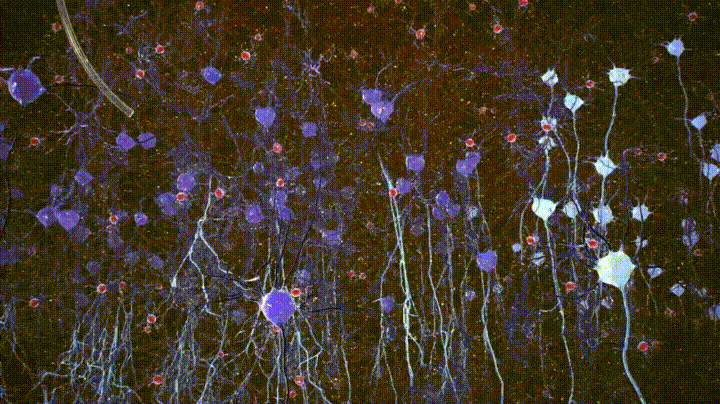MIT researchers successfully fought back the onset of Alzheimer's in mice by exposing them to light, according to a new study.
The researchers stuck mice in the early stages of Alzheimer's into a room filled with LED lights flashing at 40 Hz for an hour. Afterward, they saw a 40 to 50 percent reduction in Alzheimer’s-causing plaque in the visual cortex.
The light had triggered microglia, a type of immune cells that typically don’t function correctly in Alzheimer’s patients.
The effects of the light treatment subsided within 24 hours, but researchers found longer-lasting effects when they did the treatment for a week. They are still determining exactly how long the changes last.
It's a very exciting breakthrough, especially because it's not invasive. Previous light-based experiments required much bigger interventions — usually drilling through the animal's skull and inserting a fiberoptic tube. These techniques are called optogenetics because they involve genetically modifying neurons to be receptive to light, usually by having the subject ingest a virus carrying a light-sensitive protein.
Past optogenetics experiments have been able to switch off pain, induce compulsive behaviors, open and close the larynx, or give a mouse an erection. Scientists have also been able to retrieve lost memories in mice, a finding that is also relevant to Alzheimer’s treatment. Alzheimer’s affects more than 5 million Americans, according to some estimates, and is the sixth-leading cause of death in the US.
While all these optogenetics experiments are very exciting, scientists caution that what works in mice doesn't always translate to humans.
Radiolab producers had access to the results under embargo and produced an excellent episode about it. Listen:
